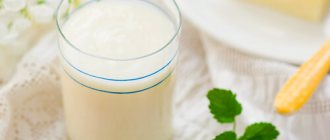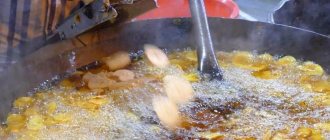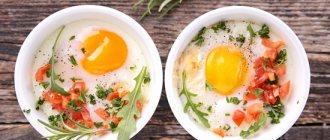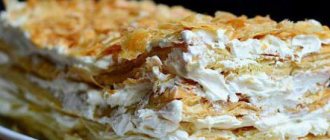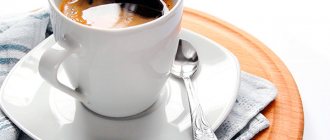Bananas are valued by bodybuilders and nutritionists for their easily digestible protein, which is necessary for gaining muscle mass and getting into shape. This is a recommended food during heavy physical activity, which helps restore strength and reduce muscle pain.
Bananas have a high calorie content, so many nutritionists question the possibility of including them in the diet of those losing weight. But if you follow the rules for its use, it is almost impossible to harm your figure.
- Use while dieting
Beneficial properties of bananas
Banana is a universal product with which you can significantly diversify your menu during a diet.
Using this fruit you can cook:
- oatmeal;
- banana milkshakes;
- a variety of banana desserts;
During a diet, it is recommended to add it to cottage cheese and smoothies.
In addition, this fruit is very healthy, because it contains a large amount of B vitamins, minerals and trace elements, namely:
- Nicotinic acid (vitamin B3) is necessary for metabolism at the cellular level. With its help, the metabolism of proteins and fats is carried out, the required level of cholesterol in the blood is regulated and maintained.
- Pantothenic acid (vitamin B5) – participates in carbohydrate metabolism, which ensures normal circulation of the vascular system, and is responsible for the formation of hemoglobin and histamine.
- Pyridoxine (vitamin B6) – necessary for the synthesis of serotonin and adrenaline. Thanks to them, healthy skin, teeth and gums are maintained.
- Potassium – ensures the normal functioning of the nervous system, affects the functioning of the heart and blood vessels of the brain. It is necessary to maintain normal blood pressure and significantly reduces the risk of stroke. Lack of potassium in the body can cause kidney failure, hypertension and cellulite.
- Sodium has a diuretic effect and the largest amount is found in unripe bananas.
In addition to the above, the fruit contains large quantities of pectins, enzymes, fibers and tannins, which have a beneficial effect on the intestines, helping to cleanse them and remove waste and toxins.
Video
Bananas are often recommended as part of a therapeutic diet. So, for those who suffer from diseases of the heart and pulmonary system, banana shakes, smoothies and yoghurts are recommended. The banana diet is useful for people with diseases of the stomach, liver, and intestines. This is due to the fact that banana is an alkaline product. It affects the normal functioning of the body's water-salt metabolism. And its skin is often used in many traditional medicine recipes.
Benefits of banana
Banana pulp is tasty and healthy; it can be used in the preparation of many dishes that can be eaten for breakfast, lunch and dinner: oatmeal with pieces of fruit, banana smoothie, curd mass with pulp, milkshake, banana chips. This is a short list of banana uses in recipes. As a result, a banana diet is interesting and does not cause hunger pangs.
The pulp brings undeniable benefits to the body, because it contains a huge amount of vitamins, minerals and essential elements:
- Vitamin B3 – stimulates the respiration process at the cellular level. Accelerates metabolic protein and carbohydrate processes. Prevents increased cholesterol levels.
- Vitamins B5 – takes part in carbohydrate metabolism. Stimulates blood circulation in capillaries and synthesizes hemoglobin and histamine.
- Vitamin B6 – promotes the production of serotonin and adrenaline. The vitamin is required to keep the skin, teeth, and gums healthy.
- Potassium – supports nervous system functions. It has a good effect on the blood vessels of the brain and heart muscle. Restores blood pressure, eliminating the risk of stroke. Lack of potassium leads to hypertension, kidney failure and the formation of cellulite on the skin.
- Magnesium – helps the heart muscle function properly. Relieves muscle tension and reduces blood clotting. Without this element, calcium and potassium are not absorbed.
- Sodium – has a diuretic property and prevents swelling. Green unripe bananas contain a lot of sodium.
Please note: Banana dishes contain dietary fiber, pectin, enzymes and tannins that remove waste and toxins from the body. If you eat them every day, the body’s fatigue decreases, your ability to work and concentration of attention increases.
Some athletes, such as heavyweights, need to gain weight. Therefore, they include bananas in their diet to increase muscle mass. The banana diet is useful for people with disorders of the myocardium and blood vessels, bronchopulmonary spasm. The diet is alkaline and is useful for treating the gastrointestinal tract and liver.
Video
Regular consumption of banana dishes regulates the water-salt balance. The fruit has a positive effect on recovery if a person has pathologies: stomach ulcers, inflammation of the oral mucosa, enteritis, atherosclerosis, liver and kidney pathologies, hypertension. It must be said that not only the pulp is useful, but also the peel; it is used in traditional medicine recipes to cure many ailments.
Composition of pulp and peel
As noted above, the fruit contains a large number of useful microelements and vitamins:
| Compound | |
| Item name | Gram for every 100 grams of fruit |
| Squirrels | 1,5 |
| Fats | 0,1 |
| Carbohydrates | 21,8 |
| Water | 74 |
| Starch | 2 |
| Cellulose | 0,8 |
| Ash | 0,9 |
| Iron | 0,06 |
| Potassium | 0,284 |
| Calcium | 0,8 |
| Sodium | 0,42 |
| B vitamins: | |
| AT 3 | 0,012 |
| AT 5 | 0,04 |
| AT 6 | 0,05 |
| Vitamin C | 0,1 |
| Folic acid | 0,1 |
| Vitamin E | 0,4 |
Banana
Banana is the name given to the fruit of the herbaceous plant banana
(
musa
), which often reaches a height of 6-9 meters, so many people mistakenly believe that bananas grow on a palm tree. The banana is an elongated cylindrical fruit, shaped like a crescent, with a dense peel and delicate elastic pulp, slightly oily texture. The color of the pulp varies from whitish-yellow to rich cream.
Banana in history and economics
Southeast Asia is considered to be the birthplace of bananas, mainly referring to the islands of the Malay Archipelago (calorizator). Bananas have been domesticated and cultivated since the 11th century BC, the first mentions of bananas date back to this period, when the plant already grew in India and many other countries, where bananas are still an important food product and the main product, the import of which supports the economy .
Is banana a berry?
By all botanical characteristics, a banana is a berry; wild bananas still have a lot of seeds, which are practically absent in cultivated varieties. Thick-skinned berries do not need seeds, because they have long been grown not from seeds. In the culinary classification, banana is classified as a fruit.
Banana calories
The calorie content of a banana is 95 kcal per 100 grams of product.
Nutritional value, composition and beneficial properties of banana
Banana pulp contains many useful substances: beta-carotene, pectin, vitamins B1, B2, B6, C, PP, as well as potassium, calcium, magnesium, iron, fluorine, phosphorus and sodium, fructose and fiber. Eating bananas has a beneficial effect on the functioning of the heart muscle, reduces the level of “bad” cholesterol, and improves the functioning of the gastrointestinal tract. Bananas lift your spirits and help prevent stress.
Banana harm
You need to remember that a banana is a high-calorie product, so it would be unwise to eat a bunch of bananas in one sitting. Bananas can also cause allergic reactions, although such cases are quite rare. Diabetics should remember that ripe bananas increase blood glucose levels, unlike unripe ones.
Types and varieties of bananas
There are a great many varieties of bananas; there are more than a hundred edible ones. Edible bananas are usually divided into two groups - dessert bananas
(bananas, which are consumed raw, are exactly what we are all used to seeing on our shelves) and
plantains
(fruits that require heat treatment have no taste when fresh).
Bananas vary in peel color, length and size of the fruit. The most famous varieties: Lady Finger, Gros Michel, Cavendish (dwarf and giant), Robusta, Valerie, Lakatan, Mysore, Ice Cream, Red Dhaka. The fact that large, long bananas are supposedly forage is nothing more than a myth. Often small bananas actually have a sweeter taste, but it all depends on the variety and time of harvest; the banana may simply turn out to be unripe.
How to select and store bananas
When choosing bananas, you need to pay attention to dense fruits, without damage or dark spots on the peel. If the bananas are yellow, then the tail should ideally be slightly greenish, not dark. Unripe bananas will become sweet if stored at room temperature in a dark place for several days. Ripe bananas are not stored in the refrigerator, where they immediately begin to darken; the ideal temperature is +15 °C.
Banana in cooking
Traditionally, bananas are eaten fresh - as an ideal snack, afternoon snack or addition to cottage cheese, yogurt or muesli. Bananas are often used for cold appetizers - dessert sandwiches (calorizer). Banana is great for making cakes and pastries, jellies and fruit salads. Bananas are also fried, dried, dried, baked, added to bread and muffin dough, and used as a raw material for making marmalades, flour and syrups.
Exotic banana dishes
Yo-yo
is a national dish of Venezuelans who fry a banana cut lengthwise and fold it, placing slices of soft white cheese inside.
Peruvians boil and puree bananas, an everyday dish called chappo
. In the Philippine Islands they make ketchup from bananas, and in Latin America they love bananas fried in oil with the addition of salt and hot jalapeno peppers.
Growing banana
For bananas to fully ripen, a subtropical climate is suitable, warm and humid, with almost the same day and night temperatures above 20 ° C. Bananas destined for export are picked slightly underripe so that we can enjoy the elastic flesh and sweet taste, and not a mushy, tasteless substance. Bananas grow in Russia (there are many banana palms in the vicinity of Sochi), but they do not ripen completely, so they are mainly of a purely decorative nature.
It is possible to grow bananas at home. To do this, you need to take an overripe black banana, remove the peel from it and take all the seeds from the middle of the banana fruit itself and place them on a paper napkin. After soaking in a weak solution of potassium permanganate, dry the seeds and plant them in prepared soil.
For more information about the process of separating seeds, preparing the land and planting and growing bananas at home, watch the video:
Banana in cosmetology and medicine
Banana is an amazing fruit that is used “to the fullest”, both the tops and the roots are used. In cosmetology, the ability of banana peels to gradually remove even the largest warts has long been noticed and actively used. Doctors in countries where bananas grow use young leaves to relieve skin conditions after burns, and the flowers of the plant are used to treat stomach ulcers and dysentery. Crushed dried banana roots are an excellent remedy for the prevention of diseases of the digestive tract. Not everyone knows that a ripe banana is helpful in relieving the symptoms of premenstrual symptoms.
Will bananas help you lose weight?
When it comes to losing weight, everything depends on the number of bananas eaten and the foods with which bananas are combined. There are special banana mono-diets; you can try a fasting day, during which the main food will be bananas (3-4 pieces) and liquid - mineral water or green tea. Hearty bananas will help you more easily endure food restrictions, but it is still not recommended to get carried away with bananas alone.
For more information about the benefits of bananas and its properties, watch the video from the TV show “About the Most Important Thing.”
Calorie content of banana per 100 grams
The average net weight of one fruit is approximately 100 grams. When calculating calories, net weight is taken, and if you do not take into account the skin of a banana per 100 grams, its calorie content is in the range of 85 to 100 units. Due to the fact that the fruit contains a significant amount of starch, it can contribute to the formation of excess weight. During the diet, banana can be eaten between main meals. It perfectly satisfies hunger and gives a feeling of fullness for a positive time.
In addition, the answer to the question: how many kcal in one medium-sized banana cannot be unambiguous, because depending on the degree of ripeness, bananas have different calorie content.
- Fresh fruits. Depending on the size: small, medium or large, the calorie content of the skinless fruit is: 75, 95, 100 calories respectively.
- Unripe, green. Due to the fact that an unripe banana contains more starch and fiber, its calorie content is higher. The green fruit has 110 calories.
- Mini. Small fruits are the sweetest. Their weight is about 80 g, and the same number of calories.
- Dried. You can find a variety of banana chips on store shelves. They are often added to various fruit and nut mixtures and muesli. This dried fruit is very healthy, its calorie content is 300 kilocalories per 100 g.
Is there starch in banana?
People who watch their diet or want to lose weight are interested in this issue. Starch is formed during the ripening process of the fruit. But the more the fruit ripens, the more starch turns into sugar.
- Unripe fruit contains a lot of starch, so eating it can cause increased gas formation.
- In a ripe fruit, the starch content tends to zero; it has been converted into sugar. As a result, eating the fruit does not lead to discomfort in the gastrointestinal tract, and the beneficial substances from it are well absorbed by the body
- An overripe banana contains some starch if it has time to ripen and has not rotted while it was “green.”
The sweeter the fruit, the less starch it contains. Unripe fruits, whose taste is similar to “grass”, contain a lot of starch.
Diet menu
Due to the fact that bananas have a pronounced sweet taste, they are an ideal product during a diet. They pair well with many dairy products, and if you're looking to shed a few extra pounds or want to maintain your ideal weight, it's worth replacing just one meal with a few pieces of fruit.
Practical advice: Today there are many recipes for banana dishes for the diet. For example, regular bread can be replaced with banana bread, the energy value of which is only 320 calories per 100 g, and banana juice contains 85 calories. Nutritionists recommend adding this fruit to cocktails, juices, smoothies and herbal teas.
In addition, it can act as the main component in a mono-diet. It is better to mix the fruit with milk or kefir and the calorie content of these drinks will not exceed 150 calories.
Video
Now, not particularly healthy foods, such as candies and sweets high in calories, can be replaced with a moderate amount of bananas. After all, they contain three times less sugar than candies, and therefore fewer calories.
| List of banana dishes and their calorie content | |
| Product, dish | Calories per 100 grams |
| Banana size: | |
| average | 85 |
| big | 100 |
| small | 80 |
| one kilogram | 8500-1000 |
| overripe banana | 117 |
| dried fruit | 300 |
| Common dishes: | |
| medium fat banana curd | 190 |
| banana oatmeal with water | 62 |
| banana milkshake | 120 |
| smoothie | 154 |
| banana kefir | 59 |
| chips | More than 500 |
| fried banana | 205 |
| banana yogurt | 136 |
| cake | 225 |
| fruit salad | 150 |
| toast | 239 |
| banana milk | 110 |
Beneficial properties of exotic fruits and their uses
Scientists have proven that if you eat 1-2 bananas daily, you will feel great.
Indeed, thanks to the beneficial substances of the yellow fruit, the body’s tone and mood increase, efficiency and attention are concentrated, and a person is less prone to fatigue.
If we compare green and ripe bananas, we will see that unripe fruits are more nutritious. One green fruit weighing 120 grams contains 145 kilocalories. And 100 grams of such a delicacy as dried bananas contain more than 300 kcal.
Mini bananas are sold in large bunches in supermarkets and are called "baby" bananas. The average length of one fruit, as a rule, does not exceed 12 centimeters. “Baby” bananas are no less sweet than regular bananas, but have a slightly different taste and aroma. The advantage of this variety is its relatively low calorie content: 80-90 kcal. Residents of countries that are large exporters of fruit consume mini bananas, while the larger variety, which is more popular in our country, is used as animal feed.
Green Banana Platano
But let's get back to calories. We already know how many calories are in a banana. Yes, there are so few calories in a banana that even those who are afraid of gaining weight can eat it, which is why the banana diet is considered one of the best in the fight against excess weight. But even here there are opponents who avoid consuming bananas due to their high content of carbohydrates, which bananas contain in excess.
Bananas are recommended for intense mental and physical work. Banana has a large supply of energy (calorizator). Just two bananas provide energy for an hour and a half of active work.
Calories in fried bananas
So, eating bananas during a diet helps to restore strength, stay in a good mood and does not injure the stomach and intestines. The main thing is to be moderate in your habits. It is better to consume this fruit in the morning rather than in the evening or after lunch. The benefits of bananas are incredibly great, so for good nutrition you should not neglect this product.
- A vein in the arm is swollen
- The doctor prescribed free medicine
- How to get rid of stretch marks and stretch marks
- Pain under the ribs on the right after physical activity
- Severe pain in the right side
When and who should not eat bananas
Regardless of the fact that bananas are a low-calorie and dietary product, some people are not recommended to consume them. The reason for this is various diseases.
Video
It is also necessary to follow some recommendations for use:
- Due to the fact that this fruit contains a significant amount of sugar, it is strictly forbidden to be consumed by people suffering from type 1 and type 2 diabetes.
- Those who are significantly overweight should completely exclude this product from their diet.
- Bananas are contraindicated for people suffering from varicose veins and thrombophlebitis.
- This fruit can thicken the blood, so it can increase the formation of blood clots.
- Poor quality, stale and spoiled fruits can have a negative effect on the liver.
- The process of digesting bananas takes quite a long time, so they should be eaten in moderation.
Many may wonder: if the calorie content of 1 banana is quite low, then why can you gain extra pounds by eating them? It's all about the carbohydrates. Any diet requires adherence to clear proportions and, when creating a diet, it is necessary to correctly compose the entire diet, namely, balance the amount of proteins, fats, carbohydrates and the number of calories. Therefore, if you decide to include dishes with bananas in your diet menu, then you should make sure that the remaining products contain the maximum amount of protein. Fats, in this case, are given third place. And in order for the diet to bring the best results, it is necessary to calculate the daily calorie intake, as well as the amount of nutrients in each serving of food.
Who are bananas prohibited?
Regardless of the calorie content of any type of banana, some people should not eat them.
Video
The following citizens are prohibited from banana dishes:
- Patients with diabetes of any type due to high sugar content.
- For those who are obese, so as not to aggravate the situation.
- Everyone should not eat stale, spoiled fruits, otherwise they can harm the liver.
- Digestion of the fruit takes a long time; it is better not to eat them in large quantities.
- Patients with varicose veins and thrombophilitis, because its components contribute to thickening of the blood and increase the risk of blood clots.
- You should not eat bananas for breakfast, otherwise there will be a surge in the release of insulin into the blood and the person may feel a headache, lethargy and faintness. It must be combined with carbohydrates, for example, oat porridge.
Banana is not a leader in fat content, so why can you gain weight from it? It turns out that the whole secret is buried in carbohydrates, of which there are too many in the fruit. If you include bananas in your diet, you need to take this into account in order to maintain a balance - proteins, fats and carbohydrates.
Important! When the majority of the menu consists of banana dishes, the rest should consist of proteins. There should be a minimum amount of fat in this diet.
It is imperative to adhere to the daily calorie intake and the amount of dietary components. To fully enjoy this overseas fruit and benefit the body, you need to eat bananas correctly. And this is to take into account contraindications in the presence of any pathologies. After all, our health is our main capital and cannot be sacrificed even to such a tasty and healthy fruit as a banana.


